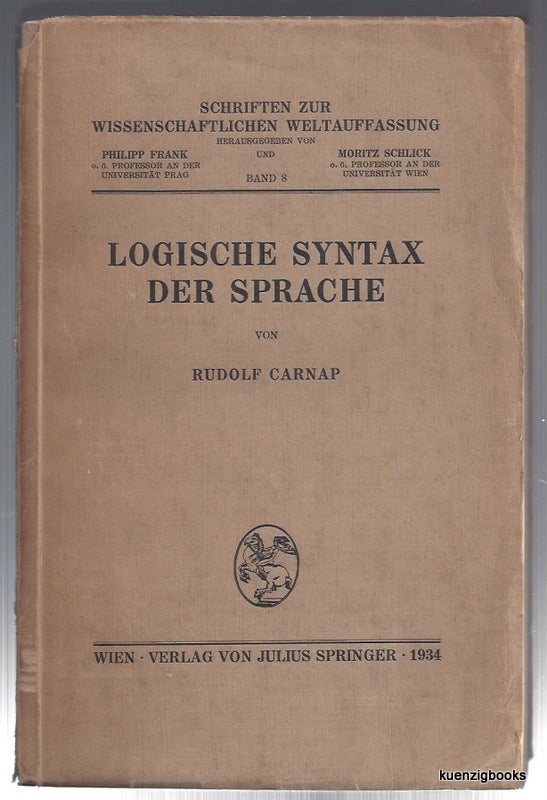
Logische Syntax Der Sprache
Wein: Julius Springer 1934. First Edition. XI, 274, [2] pages. Original printed wrappers. 8vo. Overall minor wear to the exterior. Spine panel sun darkened. Very Good. Wraps. [24035]
Rudolf Carnap was a German philosopher and a member of the "Vienna Circle". In the present work, he focuses on the Logical Syntax of Language. "The logical syntax of a symbolic language is a study of the formal properties of sentences of that language. It includes the formulation rules which determine how the symbols of the language can be combined to form sentences, the transformation rules which specify when one sentence of the language can be deduced from other sentences, and the other properties of and relations between sentences which can be defined on the basis of those rules. Syntax is a combinatory analysis of expressions, that is, of finite ordered series of symbols. Hence syntax never refers to the meaning of these symbols. Hilbert showed that a clear, formal presentation of the foundations of mathematics must use a metamathematics which is a syntax of mathematics. The notions of syntax are of central importance for the current growth of mathematical logic. The present book systematically develops the context of syntax, first for two specific Languages I and II, then for an arbitrary language..." (from a review of the 1937 english language translation of this work by Saunders MacLane in Bull. Amer. Math. Soc. 44 (3): 171–176, a copy supplied with the book).
Some have argued that this methodology helped the development of natural language processing and compiler design. It does appear to touch on some of the very difficult issues that Von Neumann and Turing were trying to work through in their 1950s attempts to develop the programmable computer. In order to move from a single purpose built computer, to one that is capable of a general purpose machine that can handle ever changing problems, software pioneers had to develop a language, syntax, and a "central processor" that was capable of reducing those instructions to reliably reproducible results.
ITEM SOLD

